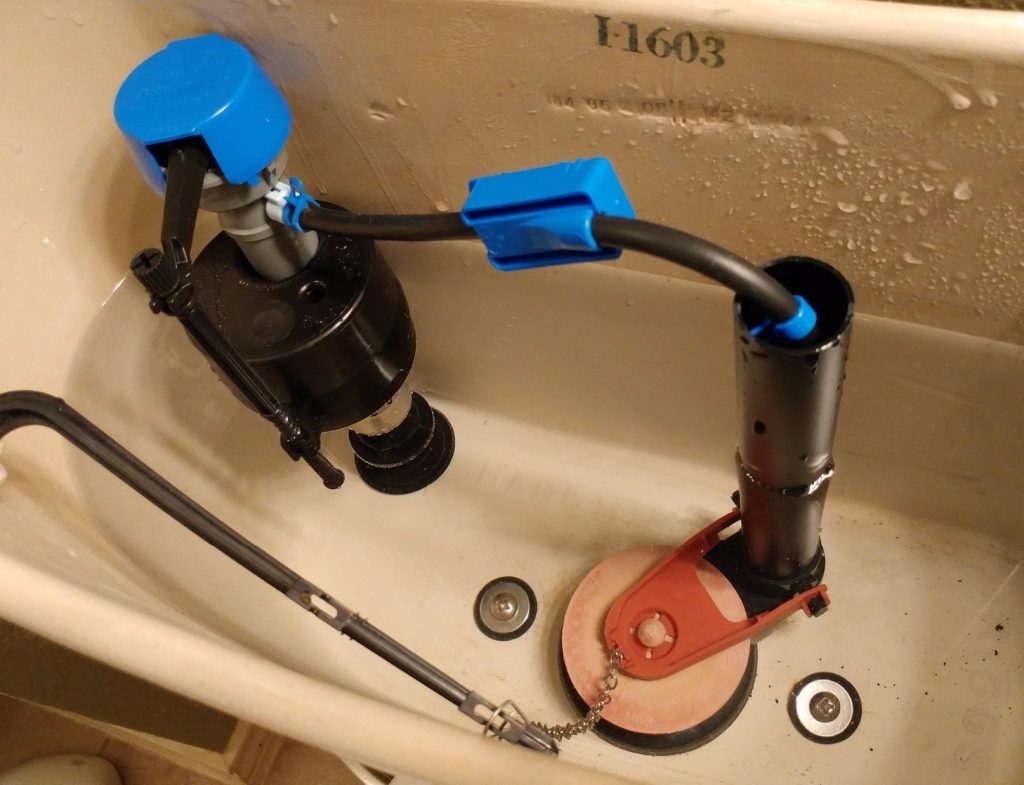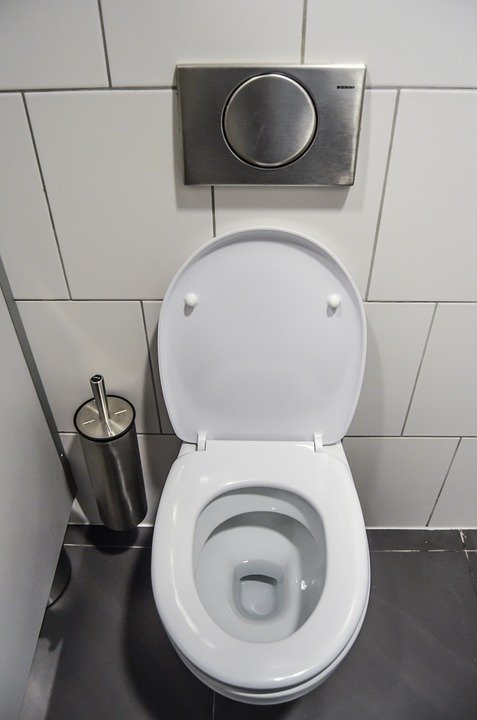How to Drain a Toilet – Clogged/Overflowing or For Repairs
Last Updated on July 28, 2023 by toilethaven
Whenever you need to repair a toilet tank, you should first drain/empty it. Sometimes you may also have to drain the toilet bowl, especially when dealing with a clogged and overflowing toilet.
To drain a toilet tank, turn off the shut-off valve on the wall behind the toilet, flush the toilet, and hold the lever down until most of the water has been flushed down. Remove the tank lid and soak up the remaining water with a sponge. Soak up the water inside the bowl, or force it down using a plunger.
To drain a toilet bowl, use a toilet plunger to force the water down the drain or soak it with a sponge. If the toilet is clogged, you will need to scoop out the water into a bucket using a small cup.
Draining a toilet to perform some repairs or replace it is different from draining it because it is clogged or/and overflowing. When a toilet is clogged, you cannot flush it because it will only add more water to the bowl, flooding the bathroom.
To drain a toilet without flushing, use a short flexible hose to siphon water from the tank into a bucket. Alternatively, you can drain the toilet using a wet/dry vac. The last method is to scoop the water with a cup and pour it into a bucket, then soak the remaining amount using a sponge.
Materials Needed
- Toilet plunger
- Empty bucket
- Water hose
- Toilet snake
- A sponge
- Rubber gloves
How to Drain a Clogged Toilet
Draining a clogged toilet is slightly different from draining a toilet that is not clogged. For instance, you cannot flush the toilet to empty the tank since the water will end up inside the bowl, fill it and cause an overflow.
This is how to drain a clogged toilet:
Step 1: Turn Off Toilet Shut Off Valve
The toilet tank is connected to the water lines by a braided stainless steel water supply line. The water supply line is, in return, connected to the toilet water shut-off valve.
To locate this valve which looks like a knob, look at the wall behind the toilet. Turn this valve all the way clockwise to shut it. Alternatively, if your toilet uses the push/pull valve, hold the valve and push it out to cut the water supply to the toilet.
Step 2: How to Drain a Toilet Tank
- Remove the toilet lid and place it in a safe place. The lid is made of porcelain and could crack easily.
- The next step is to empty the toilet tank. The easiest method is to use a hose pipe to siphon the water out into an empty bucket.
- With the hose pipe, bend it into a U-shape and fill it with water from a tap. Cover each end with a thumb. Ensure you have your gloves on.
- Introduce one end of the hose into the tank and the other into the empty bucket. Remove your thumbs at once. Water will start flowing from the tank and into the bucket.
- Once most of the water has been siphoned out, some will remain at the bottom of the tank. Use a sponge and squeeze all of it in the bucket.
- If you don’t have a hose, you can also use a small cup. Scoop the water out and pour it into the bucket. It is a long process, but it works.
- Once the toilet tank has been completely drained, the next thing is to drain the toilet bowl.
Step 3: How to Drain a Toilet Bowl with/without a Plunger
Draining a clogged toilet bowl is a little harder and messier than a toilet tank. Apart from water, the bowl will most likely contain poop and toilet paper.
Trying to unclog a toilet with poop and full of water is not recommended. You will need to empty it first.
This is how to drain a clogged toilet bowl:
- If the toilet bowl water is clear, siphon out the water as you did with the toilet tank. A small amount of water will still be left at the bottom of the bowl. Use the sponge to mop it out and squeeze it into the bucket. Always have your rubber gloves on.
- For a toilet that is clogged and has toilet paper and poop in the bowl, You will have no alternative than scoop out everything into the bucket using a small cup. Leave a little water (¼ of the bowl) to help with plunging.
- To plunge correctly, make sure your first plunge is gentle. This will allow the bell of the plunger to seal correctly on the toilet bowl outlet. Otherwise, if you go hard the first time, water will splash all over you and the bathroom.
- From there on, you can plunge more aggressively to try as much as possible to dislodge the clog, which most likely is in the trap.
- If you don’t have a plunger or if the plunger fails, bring on the toilet snake/auger. The coiled wire will hook anything trapped in the toilet and bring it to the surface. It is more effective than a plunger.
- Once the toilet is unclogged, fill the toilet with clean water and flush it down the bowl. This will wash down any toilet paper or other waste left sticking to the bowl.
How to Drain a Toilet That is Not Clogged
If you want to do some toilet tank repairs or even replace the toilet, you will have to empty both the tank and the bowl. Draining a toilet that is not clogged is easier than a clogged one.
Step 1: Drain the Toilet Tank
Start by turning off the toilet water shut-off valve. Again, locate it on your toilet’s rear wall.
At this time, your toilet tank is full of water. If you have a single flush toilet with a trip lever, flush the toilet and hold the level down for as long as possible to remove as much water as possible from the tank.
For a dual flush toilet, push down the full flush button and also hold it down to make sure as much water as possible has been flushed down.

Although you have flushed your toilet, some water will still be left at the bottom of the toilet tank. To access this water, remove the toilet tank lid and set it in a safe place to avoid falling off and breaking. The lid is not fastened to anything, so you only need to lift it off.
Put on your gloves when the lid is off, and start soaking up the water in the tank with the sponge. Squeeze the water out of the bucket. Repeat until the tank is dry.
Step 2: Drain the Toilet Bowl

A toilet plunger is mainly used to unclog a toilet. It uses pressure and suction to force clogs down the drain pipe, unclogging the toilet.
In this instance, you use the plunger to push the water in the bowl through the toilet trap and down the drainpipe. This plunging method removes most of the water in the bowl, but some will still be left at the bottom.
To remove this little amount of water, use your sponge to mop it out and squeeze it into the toilet. Remember to have your gloves on while doing this to prevent contact with germs.
If you do not have a plunger, just straight-up start with the sponge. The water in the bowl is not as much as in the tank, and it should take you less than 5 minutes to drain the bowl completely.
I have also written a detailed article on unclogging a toilet without a plunger. Read it here.
Conclusion
Draining a toilet is a simple yet important skill. Toilets will always need to be drained from time to time, especially since they clog very so often. If you know how to drain a toilet, you will save on the money you would have otherwise used to pay a plumber.